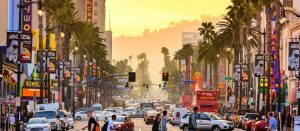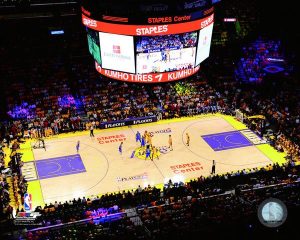
California, often referred to as the “Golden State,” is located on the western coast of the United States. Known for its diverse geography, thriving economy, and cultural influence, California is the most populous state in the U.S. With a rich history and a forward-looking ethos, California plays a crucial role in national and global contexts.
Geography
Location and Size
California is bordered by Oregon to the north, Nevada to the east, Arizona to the southeast, and the Mexican state of Baja California to the south. To the west, the state is bordered by the Pacific Ocean. It is the third-largest state in the U.S. by area, covering approximately 163,696 square miles (423,970 km²).
Natural Features

Mount Whitney
California's geography is incredibly varied. It includes the Sierra Nevada mountain range, the fertile Central Valley, the Mojave Desert, and the Pacific coastline. The state is home to Mount Whitney, the highest point in the contiguous United States, and Death Valley, the lowest and hottest area in North America.
Climate
The climate in California varies significantly from region to region. Coastal areas typically experience Mediterranean climates with wet winters and dry summers, while the inland and desert areas can have extreme temperatures. The northern regions are generally cooler and receive more precipitation compared to the southern parts.
History
Early History and Native Peoples
Before European contact, California was home to numerous indigenous tribes, including the Chumash, Miwok, and Pomo. These tribes had diverse cultures and languages, adapted to the varied environments across the state.
European Exploration and Colonization

Juan Rodríguez Cabrillo
In 1542, the Portuguese explorer Juan Rodríguez Cabrillo, sailing for Spain, became the first European to explore the California coast. In 1769, Spanish missionaries established the first of 21 missions, beginning with San Diego de Alcalá. The mission system aimed to convert the Native Americans to Christianity and integrate them into Spanish colonial society.
Mexican Rule and Statehood
California became part of Mexico in 1821 following its independence from Spain. The region remained under Mexican control until the Mexican-American War, which ended with the Treaty of Guadalupe Hidalgo in 1848. Subsequently, California was ceded to the United States. The discovery of gold at Sutter's Mill in 1848 sparked the California Gold Rush, leading to rapid population growth and economic development. California was admitted as the 31st state of the Union on September 9, 1850.
Economy
Agriculture
California's Central Valley is one of the most productive agricultural regions in the world, supplying over half of the fruits, vegetables, and nuts grown in the United States. Major products include almonds, grapes, strawberries, and lettuce. The state's agriculture is supported by a complex system of water distribution, which is crucial given California's variable climate and frequent droughts.
Technology and Innovation
Silicon Valley, located in the southern part of the San Francisco Bay Area, is the global hub for high technology and innovation. Home to leading tech companies like Apple, Google, and Facebook, Silicon Valley drives significant economic activity and job creation. The region's focus on technological development has positioned California as a leader in the information technology sector.
Entertainment and Tourism
Los Angeles, with its iconic Hollywood district, is the center of the global entertainment industry. The film, television, and music industries generate billions of dollars annually and draw talent from around the world. Additionally, California's diverse landscapes, national parks, and urban attractions make it a top tourist destination, attracting millions of visitors each year.
Find out more about California Probate Bonds here and our California Notary Bonds and License & Permit Bonds in California.
Here is our page on California Performance Bonds and our page on Bid Bonds in California.
Energy and Environment
California is a leader in renewable energy production and environmental protection. The state has implemented ambitious goals to reduce greenhouse gas emissions and promote the use of solar, wind, and geothermal energy. These efforts are part of California's broader commitment to addressing climate change and fostering sustainable development.
Demographics
Population
As of 2021, California has a population of approximately 39.24 million people, making it the most populous state in the U.S. The state's population is highly diverse, reflecting a rich tapestry of ethnicities, cultures, and languages.
Major Cities

Los Angeles
- Los Angeles: The largest city in California, known for its entertainment industry, cultural institutions, and sprawling metropolis.
- San Francisco: Renowned for its historic landmarks like the Golden Gate Bridge, diverse neighborhoods, and as a financial and cultural hub.
- San Diego: Known for its beaches, parks, and proximity to the Mexican border.
- San Jose: The heart of Silicon Valley and a major tech center.
Ethnic and Cultural Diversity
California is one of the most ethnically diverse states in the U.S. Significant populations include Hispanic and Latino Americans, Asian Americans, African Americans, and Pacific Islanders. This diversity is reflected in the state's cultural festivals, culinary landscape, and multilingual communities.
Education
Higher Education
California boasts a robust higher education system, including world-renowned public universities such as the University of California (UC) system and California State University (CSU) system. Prominent private institutions include Stanford University, the California Institute of Technology (Caltech), and the University of Southern California (USC).
K-12 Education
The state operates the largest public school system in the U.S., serving over 6 million students. California's Department of Education oversees various initiatives aimed at improving educational outcomes and addressing disparities in resources and performance among different districts.
Transportation
Roadways
California has an extensive network of highways and freeways, including the iconic Pacific Coast Highway (State Route 1) and Interstate 5, which runs north-south through the entire state. Traffic congestion, particularly in urban areas like Los Angeles and the Bay Area, is a significant challenge.
Public Transit
Major cities in California have developed public transit systems to alleviate traffic and reduce environmental impact. San Francisco's Bay Area Rapid Transit (BART) system, Los Angeles Metro, and San Diego's trolley system are notable examples.
Airports
California is home to several major international airports, including Los Angeles International Airport (LAX), San Francisco International Airport (SFO), and San Diego International Airport (SAN). These airports serve as key hubs for domestic and international travel.
Government and Politics
State Government
California's government is divided into three branches: executive, legislative, and judicial. The Governor, currently Gavin Newsom, heads the executive branch. The California State Legislature consists of the State Assembly and the State Senate.
Political Landscape
California is known for its progressive politics and has been a Democratic stronghold in recent decades. The state plays a significant role in national elections due to its large number of electoral votes.
Policy Initiatives
California is at the forefront of various policy initiatives, particularly in areas such as environmental regulation, healthcare, and technology. The state's stringent environmental laws and ambitious climate goals serve as a model for other states and countries.
Culture
Arts and Entertainment
California is a cultural powerhouse, with a vibrant arts scene spanning music, film, theater, and visual arts. Hollywood remains the epicenter of the global entertainment industry, while cities like San Francisco and Los Angeles boast world-class museums, galleries, and performance venues.

Los Angeles Lakers
Sports
California is home to numerous professional sports teams across various leagues, including the NBA, NFL, MLB, and NHL. Popular teams include the Los Angeles Lakers, San Francisco 49ers, Los Angeles Dodgers, and Golden State Warriors. The state also hosts major sporting events, including the Rose Bowl and the US Open of Surfing.
Cuisine
California's cuisine reflects its diverse population and abundant agricultural resources. The state is known for its fresh produce, innovative fusion dishes, and wine industry. Notable culinary contributions include the farm-to-table movement and the development of California-style sushi and fusion cuisine.
Challenges
Housing and Homelessness
California faces a significant housing crisis, characterized by high costs and a shortage of affordable housing. This issue has contributed to a growing homelessness problem, particularly in major cities like Los Angeles and San Francisco.
Wildfires
Wildfires are a recurring challenge in California, exacerbated by climate change and prolonged drought conditions. The state invests heavily in fire prevention and response, but the impact on communities and natural landscapes remains a significant concern.
Water Scarcity
Water scarcity is a critical issue for California, affecting agriculture, urban areas, and ecosystems. The state has implemented various measures to manage water resources, including conservation efforts and investments in infrastructure, but balancing the needs of different regions remains complex.
Conclusion
California, with its dynamic economy, diverse population, and innovative spirit, continues to shape and influence both the United States and the world. While the state faces significant challenges, its resilience and commitment to progress ensure that it remains a vital and vibrant part of the global community.
